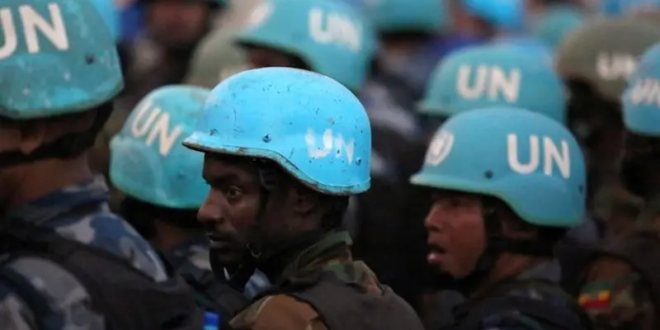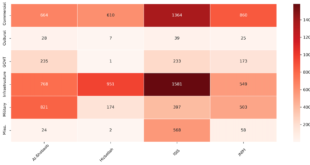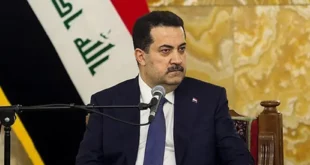The number of personnel deployed to multilateral peace operations fell by more than 40 per cent between 2015 and 2024, according to a new analysis of developments and trends in multilateral peace operations released today by the Stockholm International Peace Research Institute (SIPRI).
A total of 61 multilateral peace operations were active around the world during 2024. Geopolitical tensions and funding shortfalls are putting growing pressure on multilateral peace operations. The new report and data are published ahead of the International Day of United Nations Peacekeepers on 29 May and are available at www.sipri.org.
A total of 61 multilateral peace operations were active in 36 countries or territories around the world during 2024. This was two operations fewer than in 2023. The largest number (21) were in sub-Saharan Africa, 19 in Europe, 14 in the Middle East and North Africa (MENA), 4 in the Americas and 3 in Asia and Oceania.
As of 31 December 2024, 94 451 international personnel were deployed in 57 peace operations, 42 per cent fewer than in 2015 (161 509 international personnel) and 6 per cent fewer than in 2023 (100 568). The large drop in personnel deployments over the decade happened even as the number of active missions remained relatively stable.
‘In recent years it has become much harder to agree on, deploy and sustain multilateral peace operations, both for the United Nations and for regional organizations like the African Union,’ said Dr Claudia Pfeifer Cruz, Senior Researcher in the SIPRI Peace Operations and Conflict Management Programme. ‘This has real consequences for civilians on the ground.’
Nearly three quarters of peace operations personnel (74 per cent, or 69 913) were deployed in sub-Saharan Africa in 2024. Another 15 per cent (14 498) were deployed in MENA; 9 per cent (8898) in Europe; 1 per cent (828) in the Americas; and 0.3 per cent (314) in Asia and Oceania. The only region to see a significant increase in personnel deployments compared to the end of 2023 was the Americas (+120 per cent), while numbers fell or stayed at around the same level in the other regions.
Geopolitical tensions hamper multilateral cooperation
Geopolitical tensions within the UN Security Council continue to impact multilateral peace operations. Despite a rising incidence of conflict around the world, the past decade has seen no new large-scale UN-led peace operations being deployed. Talks on mission mandates in 2024 were often difficult and ambitions low.
‘If cooperation on peace operations in the UN Security Council does not improve, we are likely to see states increasingly turning away from UN-backed multilateral approaches and trying to manage conflict in others ways,’ said Dr Jaïr van der Lijn, Director of the SIPRI Peace Operations and Conflict Management Programme. ‘We can already see this happening in the increased use of private military and security companies and the proliferation of bilateral agreements for military deployments, for example in Mozambique and eastern Democratic Republic of the Congo.’
Divisions within the UN Security Council contributed to delays in approving and deploying the Multinational Security Support Mission in Haiti (MSS). Although discussions about the mission started in 2022, the first personnel deployments—a small contingent of Kenyan police—only happened in June 2024. In the interim, the problems related to gang violence that the MSS was meant to help address had deepened considerably.
Budget cuts threaten peace operation deployments and effectiveness
Funding constraints affected many multilateral peace operations in 2024. A liquidity crisis in the UN peacekeeping budget, caused by delayed or incomplete payments from China, the United States and other states, impacted several UN-led operations. Operations led by regional organizations also suffered financial challenges. For example, funding shortfalls contributed to the termination of the Southern African Development Community Mission in Mozambique (SAMIM) in July.
Funding challenges are likely to deepen in 2025, as top financial contributors such as the USA and European Union member states shift their priorities towards defence and cut spending on aid and peace operations.
‘Increased budgetary pressure could force existing peace operations to downsize or close, while any new missions have precarious funding and are undersized or under-equipped—if they are deployed at all,’ said Dr Claudia Pfeifer Cruz. ‘As traditional donors cut their investment in peace operations in favour of spending on national or regional defence, they could be allowing other security threats to intensify and spread.’
Host states put brakes on peace operation withdrawals
In recent years, several states affected by conflict have sought more militarized alternatives to multilateral peace operations, including the deployment of ad hoc military forces and of private military and security companies (PMSCs). However, these alternatives have often had poor results. For example, the closure of a major UN peace operation in Mali in 2023 was followed by growing threats from armed groups, despite the government working with a PMSC to fight the insurgency.
In 2024 host governments in the Democratic Republic of the Congo (DRC) and Somalia asked peace operations they had previously told to close down to stay longer, due to concerns about armed groups gaining territory in areas from which the operations had withdrawn.
‘When peace operations have been drawn down or closed prematurely, it has left a dangerous security vacuum in which non-state armed groups have gained ground, displacing and even killing civilians,’ said Dr Claudia Pfeifer Cruz.
‘Whatever the limitations of peace operations, they are still one of the most effective conflict-management tools that we have,’ said Dr Jaïr van der Lijn.
 Eurasia Press & News
Eurasia Press & News




